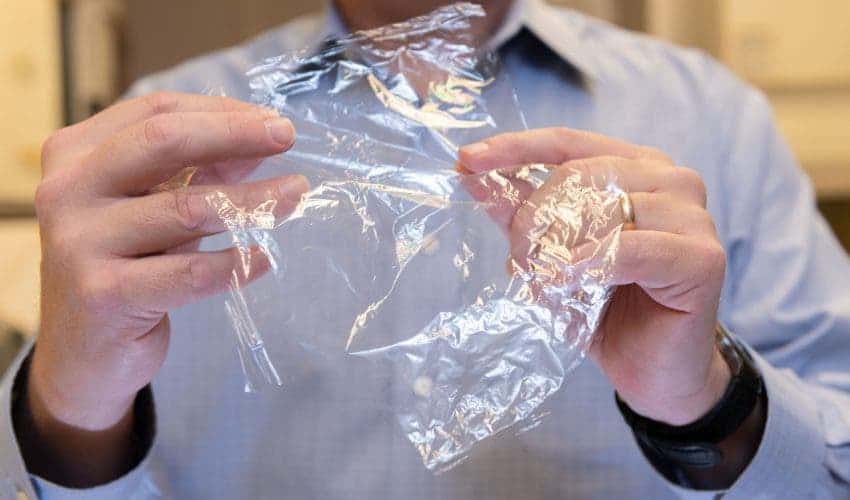Single-use food wrapping has created a rubbish problem that now pollutes every corner of the world. In an effort to address this kind of pollution, researchers at the Georgia Institute of Technology have developed an environmentally-friendly alternative that could replace flexible plastic film packaging.
The new renewable and biodegradable material is a flexible film made from multiple layers of chitin from crab shells and cellulose from trees. Chitin and cellulose, whose chemical structure are incredibly similar, are the most abundant natural biopolymers on the planet. Researchers combined the two by suspending them in water, then sprayed the solution onto a surface in alternating layers. Once it dried, the material was found to be strong, flexible, transparent, and compostable.
While plastic packaging is often scorned, it does have its benefits. Thanks to some kinds of plastic packaging, for instance, food waste is prevented, thereby reducing deforestation, fertilizer use, or vehicular emissions. However, this doesn’t balance out the inevitable litter problems associated with plastic wrapping, which is why having a material that can safely store food without putting too much strain on the environment is welcomed.
Most transparent plastic packagings around the world are made from PET, or polyethylene terephthalate. The new chitin-cellulose transparent film has “up to a 67 percent reduction in oxygen permeability over some forms of PET, which means it could in theory keep foods fresher longer,” said study co-author J. Carson Meredith is a professor in Georgia Tech’s School of Chemical and Biomolecular Engineering.
The effectiveness of the new material in keeping food fresh is due to its crystal structure, which keeps gas molecules like oxygen from penetrating the material. PET, on the other hand, has significant amorphous or non-crystalline content, which enables paths that gases can take to reach the food the packing is supposed to protect from spoiling.
“We had been looking at cellulose nanocrystals for several years and exploring ways to improve those for use in lightweight composites as well as food packaging, because of the huge market opportunity for renewable and compostable packaging, and how important food packaging overall is going to be as the population continues to grow,” said Professor Meredith.
Chitin and cellulose are both very cheap and naturally-available materials. The only thing that keeps the new material from becoming commercially available in mass is finding a cost-effective manufacturing process. Mass producing chitin may also be problematic. Additionally, the team plan on improving their material’s ability to block water vapor.
The findings appeared in the journal ACS Sustainable Chemistry and Engineering.










